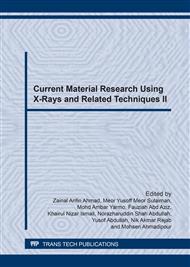p.290
p.297
p.304
p.309
p.314
p.319
p.324
p.333
p.338
EDS Analysis for Fruit Prunus Elemental Composition Determination
Abstract:
The questions of the practical usage of the analytical scanning electron microscope JSM 600 LA by JEOL company (Japan) with EDS system – microanalysis were envisaged. This device was used to study the structure and elemental composition of the fruit ash received from 6 breeds of 3 plum species. Plum fruit are rich in mineral substances, the following order of substances accumulation is characteristic for them: K > P > Ca > Mg > Na ≈ S > Fe > Zn ≈ Cu > Mn ≈ Co > N i≈ Pb. In fruit pulp K is accumulated on 7 – 20 % more than in skin. The concentration of Ca, Cu, Fe, Ni, Zn and Pb in fruit skin is in 2 – 10 times higher than in pulp. The most of mineral substances is accumulated in the fruit of Prunus salicina L. plum specie. The significant correlations are determined between Ca and Mg (r 0.75) and Ca and Ni (r 0.71); the medium correlation is indicated between Ca and Cu (r 0.62) and Cu and Ni (r 0.55).
Info:
Periodical:
Pages:
314-318
Citation:
Online since:
March 2017
Authors:
Price:
Сopyright:
© 2017 Trans Tech Publications Ltd. All Rights Reserved
Share:
Citation:


